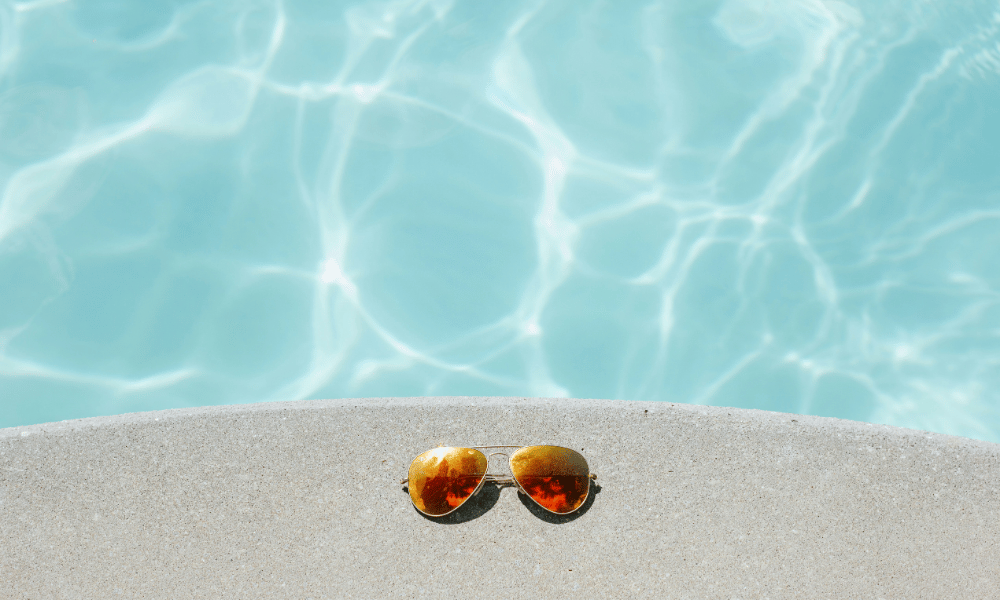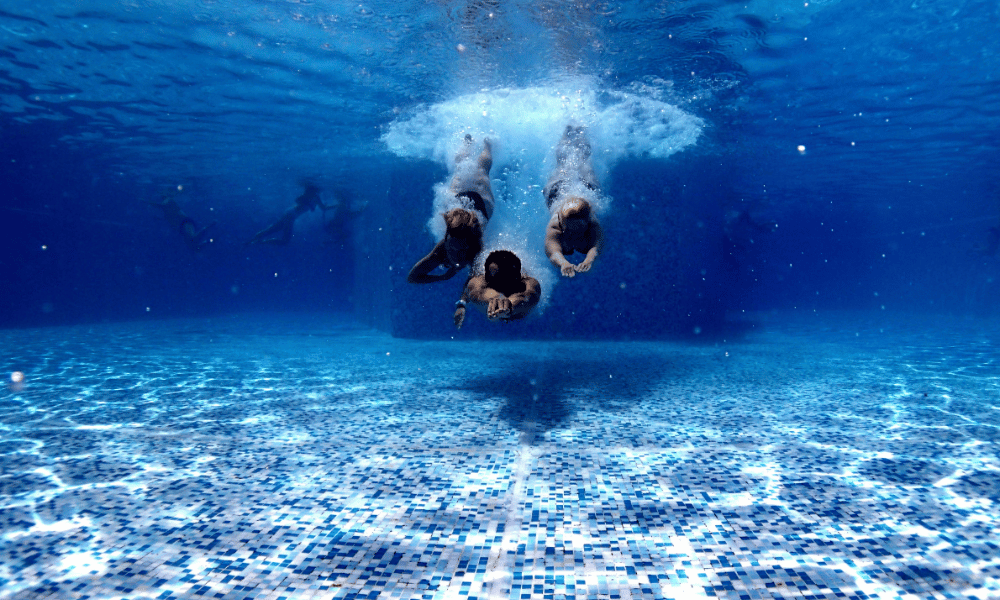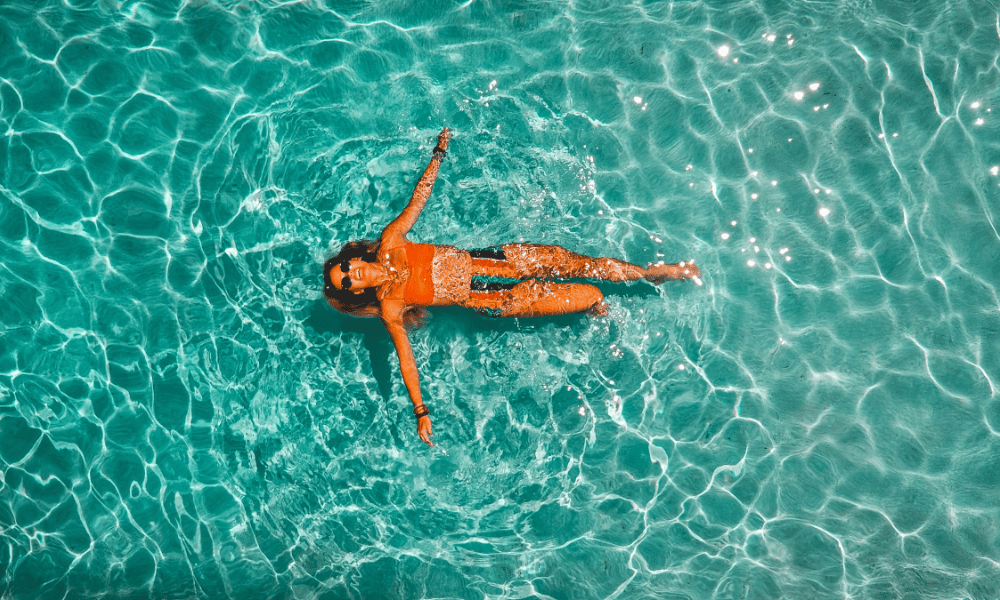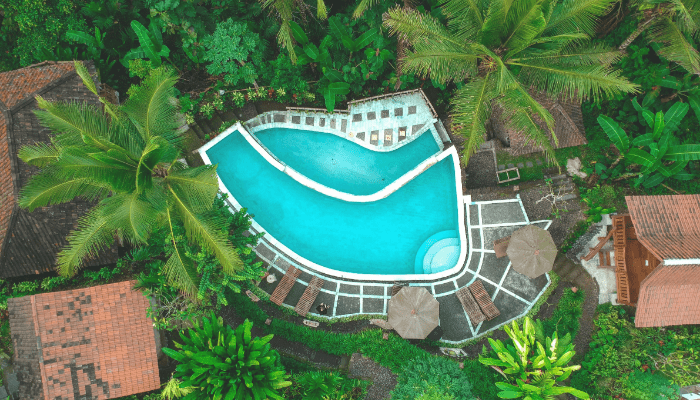Key Takeaways
- Average lap pool cost ranges from $6,000 to over $80,000
- In-ground designs offer full customization at higher cost
- Above-ground options are cheapest and quickest to install
- Materials, size, and location are the biggest cost factors
- Heating and maintenance can add thousands per year
- Indoor pools require ventilation and higher upfront spending
- Multiple quotes help prevent overpaying
- Clear feature lists keep projects on budget
- Off-season construction may lower rates
- Plan for both upfront and ongoing costs before building

A lap pool can be a sleek fitness upgrade or a full-on luxury statement, but either way, it’s not a cheap project. Depending on the size, materials, and features you choose, you could spend anywhere from a few thousand dollars for a compact above-ground model to well over $100,000 for a custom in-ground installation.
That’s a big range, and one that can surprise even the most prepared homeowners. The problem is that most people only see the headline price and don’t account for excavation, heating, filtration, or ongoing maintenance.
In this guide, we’ll break down the real numbers, explain where your money actually goes, and give you the kind of practical, detailed insight that helps you budget with confidence before you commit to a single shovelful of dirt.

Average Lap Pool Cost at a Glance
Lap pools can range from surprisingly affordable to the kind of number that makes you question your life choices. According to Angi, the average is around $44,000. That range spans from $6,000 for a simple above-ground build to $80,000+ for a high-end custom installation. Go even bigger, and you could cross the $100,000 mark, especially for Olympic-size or luxury indoor builds.
Why the big gap? It comes down to length, materials, installation complexity, and add-on features like heating, automation, or infinity edges. You are essentially combining landscaping, structural engineering, and home systems in one project. The more elaborate your choices, the higher the price climbs.
Cost by Pool Type
Above-Ground Lap Pools
These are the budget entry point, usually priced between $4,000 and $6,000. They require minimal excavation and can often be installed in a matter of days. Prefabricated models, like those sold by All Swim, offer an affordable way to get a functional lap pool without a major construction project. Downsides include limited size options and a shorter lifespan compared to in-ground builds.
In-Ground Lap Pools
Expect to spend between $25,000 and $100,000+ depending on your design. These pools integrate beautifully with landscaping and can be built to exact specifications. You can choose materials, depth, lane markings, and finishes to suit your vision. The trade-off is higher installation complexity, longer timelines, and permanent placement. Once it’s in, it’s not going anywhere without major cost.
Indoor Lap Pools
Year-round swimming is appealing, but indoor pools are at the top end of the price spectrum. Costs typically run $50,000 to $100,000+, and that’s before factoring in ventilation, heating, and humidity control systems. For serious swimmers in cold climates, the investment can be worth it. Indoor builds also eliminate weather delays during construction, which can be a bonus.
Infinity Edge and Saltwater Lap Pools
Infinity-edge lap pools, where water flows seamlessly over one side, start around $80,000. Saltwater systems, which use salt to generate chlorine, average about $50,000. According to Angi, saltwater pools feel softer on skin and eyes but require regular upkeep of the generator and cell. Combining both features can make your backyard look like a resort, but it will push your budget higher.
Endless and Swim-in-Place Pools
These compact pools generate a current so you can swim in place, making them ideal for small yards or even indoor spaces. Endless Pools notes prices starting at $24,000. They offer lower operating costs, less maintenance, and the ability to fit where a traditional lap pool wouldn’t.

What Drives Lap Pool Costs
Size and Length
A longer pool means more excavation, more materials, and more water to heat and clean. Competitive swimmers might want 75 feet or more, but for most homeowners, 40 to 50 feet is a comfortable, efficient length.
Material Choices
- Vinyl: Inexpensive and smooth, but less durable over time. Around $21 per square foot.
- Fiberglass: Durable and low-maintenance, but limited in shape. Costs range from $35 to $66 per square foot.
- Concrete: Fully customizable in every way, but time-intensive and typically $55 to $72 per square foot.
- Metals: Stainless steel or copper can exceed $100 per square foot, reserved for specialty builds.
Full breakdowns of material costs can be found in Angi’s guide.
Labor and Permits
Labor can be 25-50% of the total project. Site prep matters and depends on rocky soil, access difficulty, or grading issues. These will raise costs quickly. Permits can range from a few hundred to several thousand dollars, depending on your location and local regulations.
Heating and Energy Use
Heating is one of the most significant long-term costs. A heated 40-foot pool in a cool climate can add hundreds to monthly energy bills. Solar covers, heat pumps, and efficient heaters reduce this load but increase upfront costs.
Maintenance
Even with a smaller footprint than traditional pools, lap pools still need care. Expect annual costs between $1,000 and $3,000 for chemicals, filters, cleaning, and possible service visits. Neglecting maintenance almost always leads to more expensive repairs later.
Designing for Your Space and Budget
Your property size and shape will dictate your pool options. A narrow yard might suit a slim 8-foot-wide pool, while larger lots can allow for added deck space, landscaping, and extra depth.
If you’re going indoors, factor in ventilation systems and moisture barriers. For outdoor pools, think about privacy, sun exposure, and wind protection. The Spruce suggests at least 30-75 feet of length for most home lap pools, plus enough deck clearance for safe access.
Above-ground models can be enhanced with surrounding decks for a more integrated look, while in-ground builds can be paired with features like automatic covers to improve safety and energy efficiency.
Timeframe to Build
In good conditions, an in-ground lap pool might be ready in 6-12 weeks. However, Reddit users have shared that delays are common, with some projects stretching to 8-10 months due to material shortages or high contractor demand. Indoor and custom builds almost always take longer, so if you have a specific completion date in mind, like the start of summer, plan to begin months in advance.
Tips to Keep Costs Under Control
- Get at least three itemized quotes from experienced pool builders.
- Decide your must-have features before requesting designs.
- Avoid mid-project changes, which almost always add cost.
- Schedule construction in the off-season for potential savings.
- Use efficient heating and covers to lower long-term bills.
- Budget for yearly maintenance from the start.
- Understand permit requirements before you break ground.

Conclusion
The cost of a lap pool comes down to three things: your goals, your space, and your willingness to plan ahead. If you understand the trade-offs between pool types, know the true cost drivers, and factor in ongoing expenses from the start, you’ll avoid the budget shocks that catch so many buyers off guard.
Whether you want a minimalist training pool or a heated, year-round showpiece, the smartest move is to get multiple quotes, compare them line by line, and keep your must-have list realistic.
Done right, a lap pool can be an investment that pays you back in fitness, relaxation, and even resale value. Done wrong, it’s just an expensive hole in the ground. The choice and the savings are entirely in your hands.
Thinking about a lap pool? Start with a smart plan.
Oásis Biosistema designs custom lap pools that fit your space, lifestyle, and long-term budget, from minimalist setups to full luxury builds.
FAQ
How much is a lap in a pool?
A standard lap in most pools is 25 meters (82 feet) in short-course pools or 50 meters (164 feet) in Olympic-size pools.
Why are lap pools more expensive?
Lap pools are pricier due to their length, excavation needs, reinforced structure, and higher construction and filtration costs compared to smaller pools.
What is the cheapest inground pool to put in?
Vinyl-liner pools are usually the cheapest inground option, with lower upfront costs and customizable shapes.
How expensive is it to put in a small pool?
A small inground pool typically costs $20,000–$40,000, depending on materials, site preparation, and added features.



